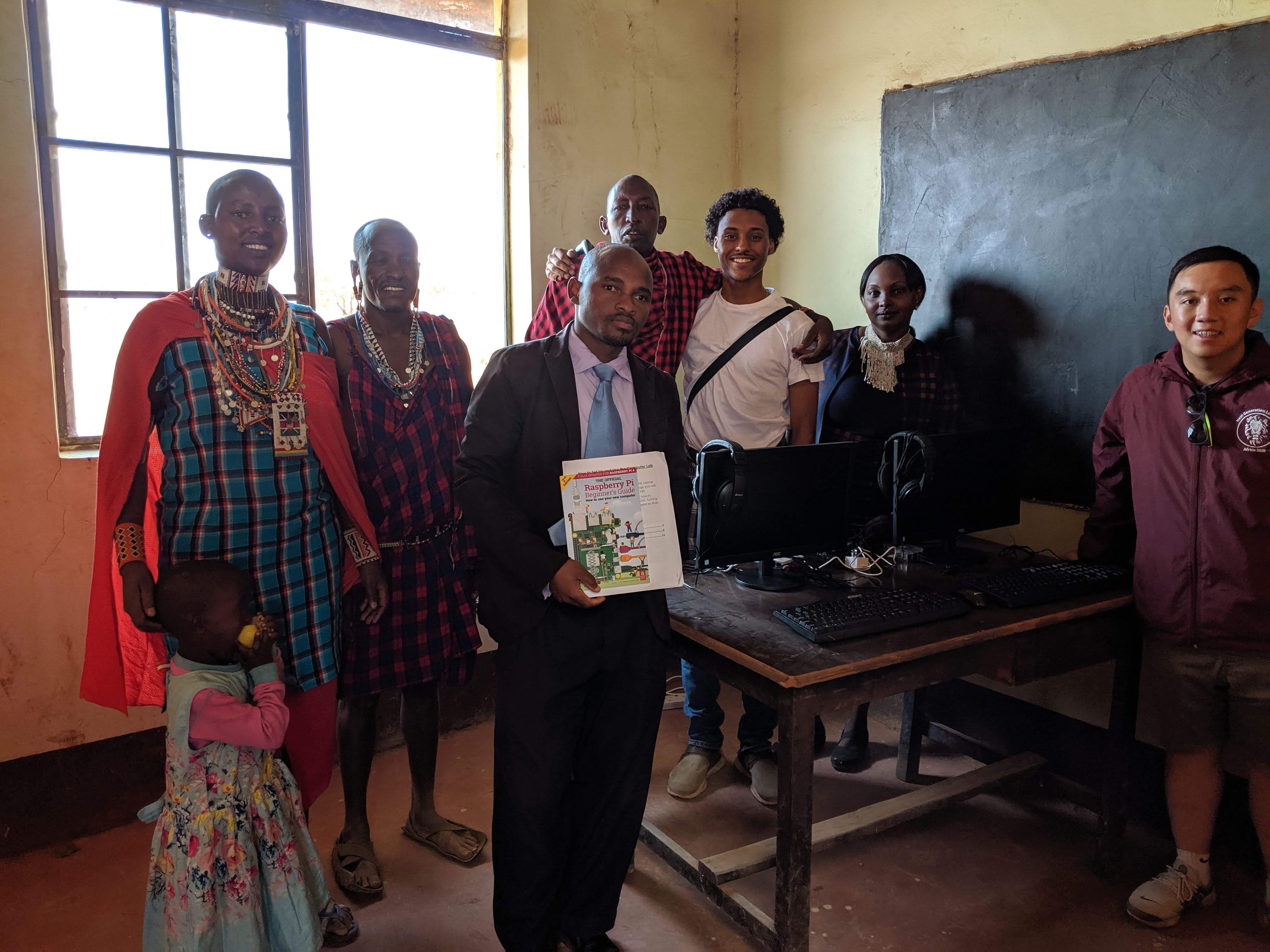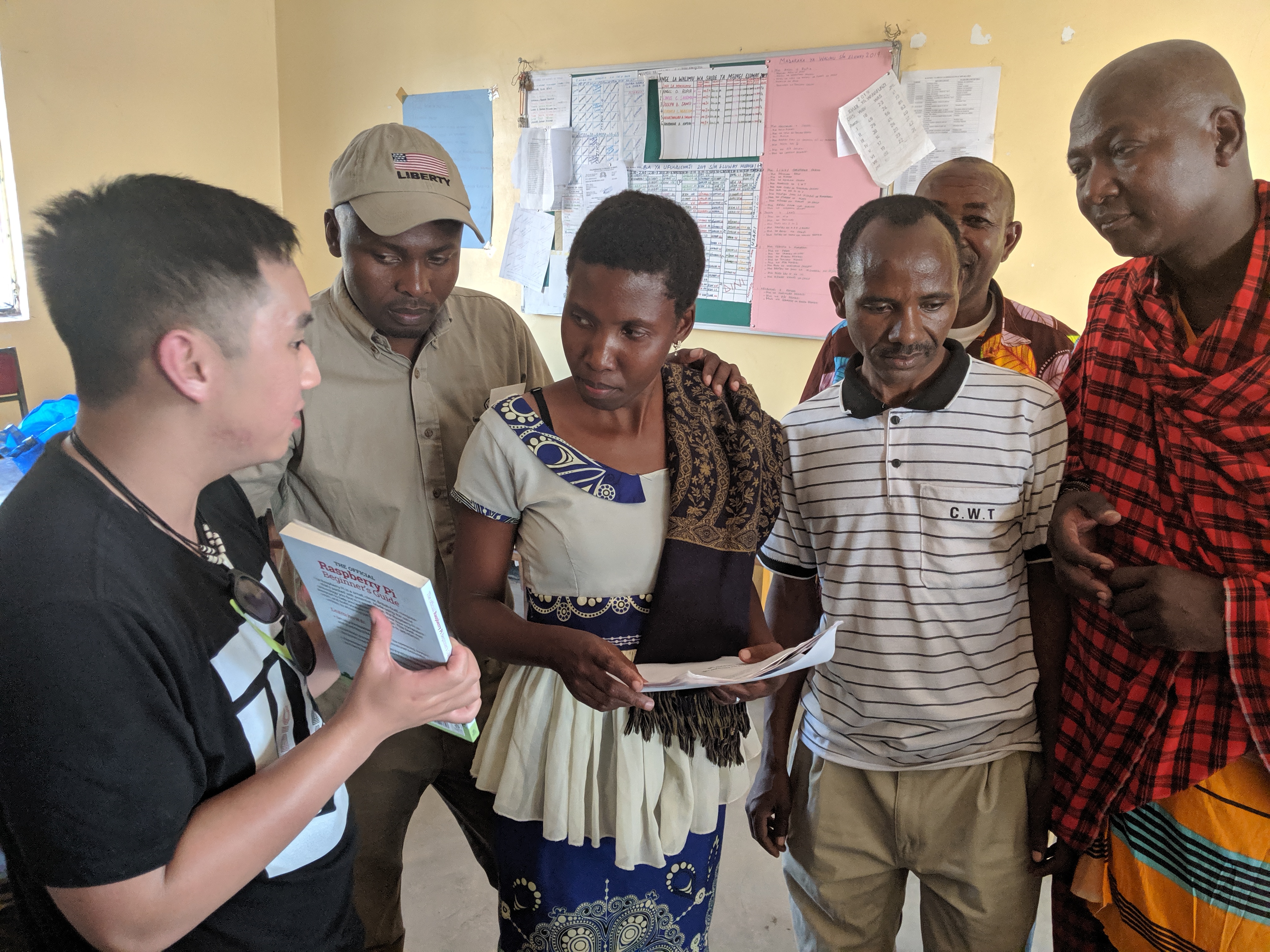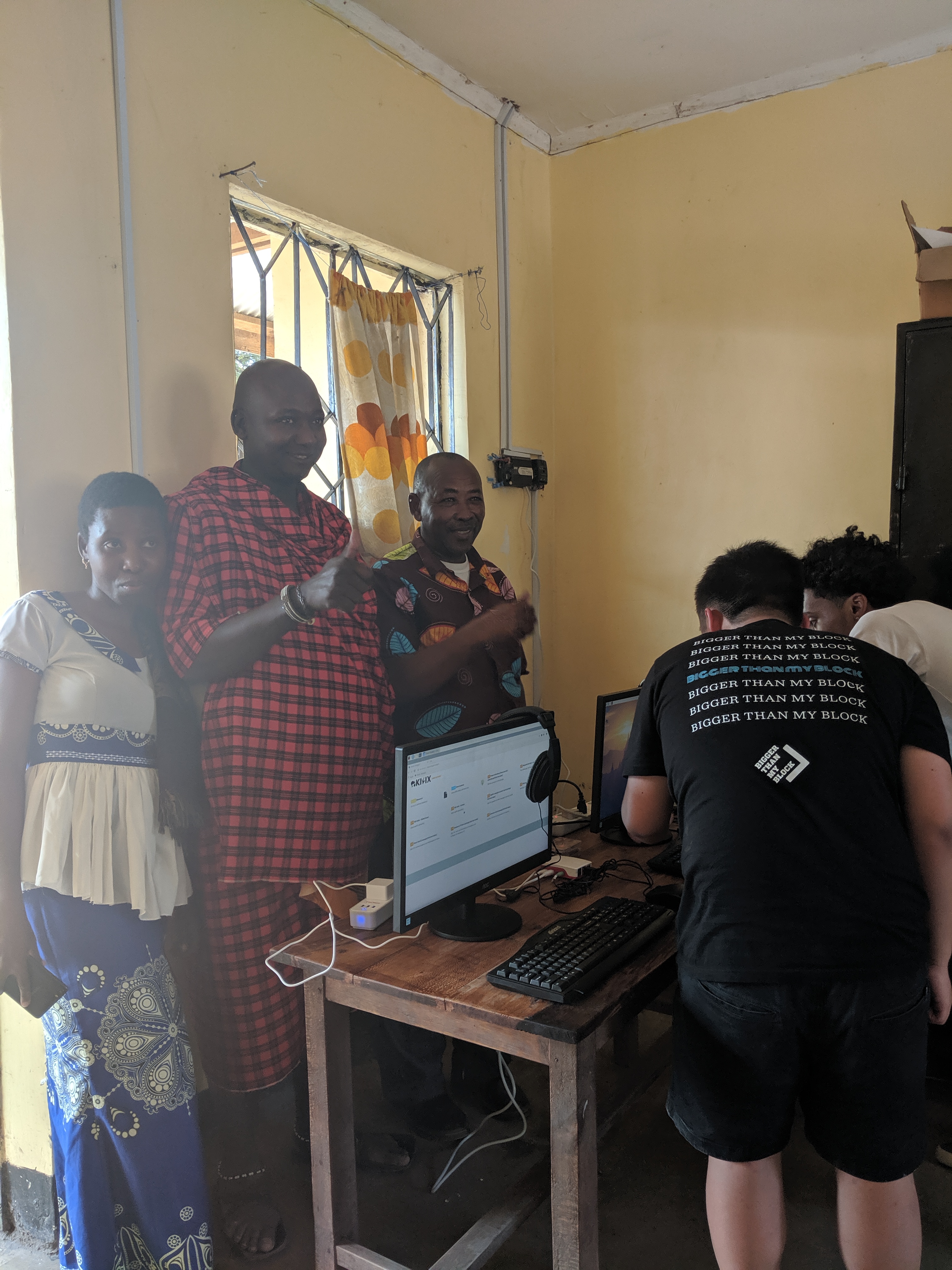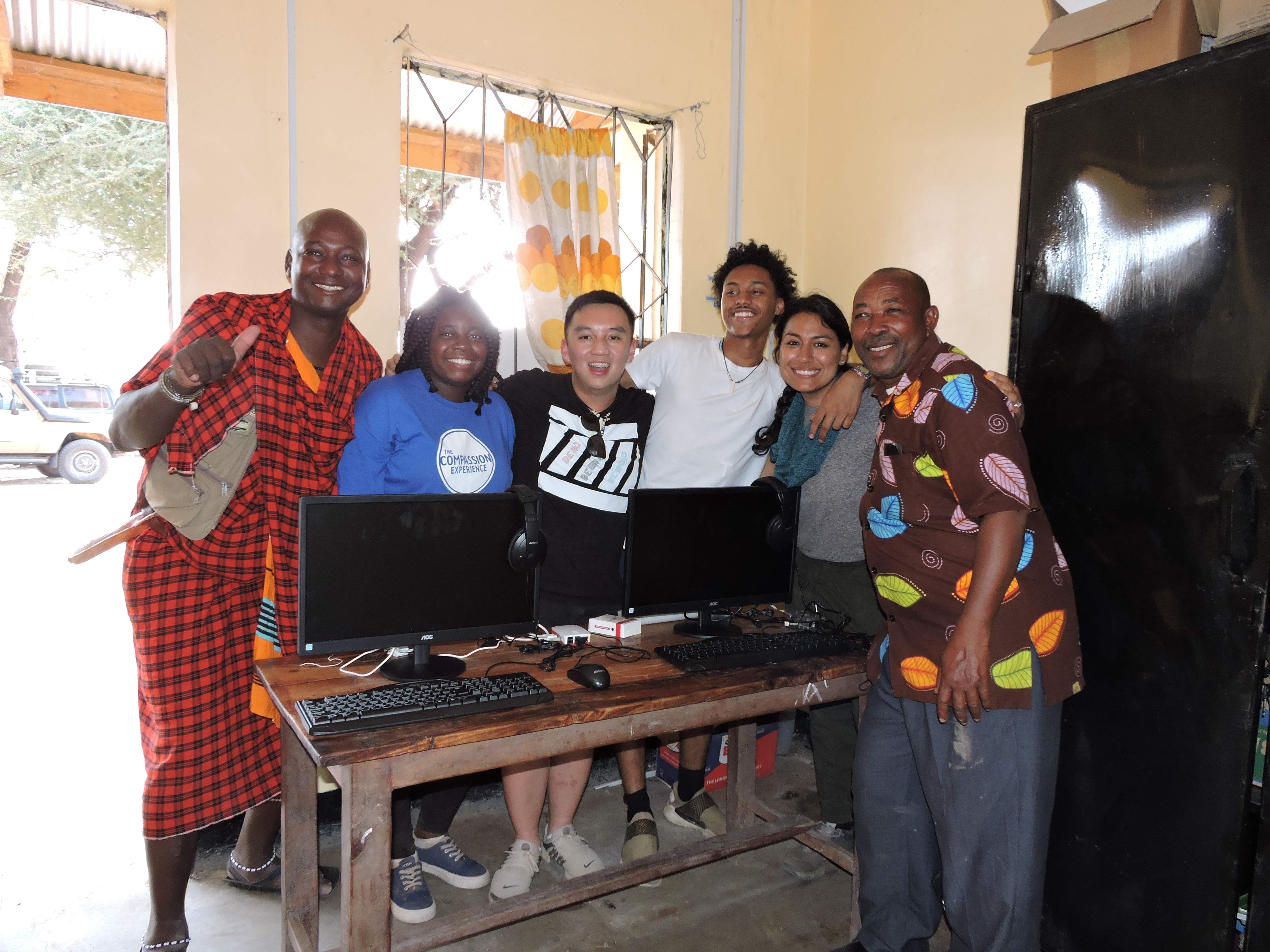Using Kiwix To Power Offline Learning In Remote Schools
How my wife and I built a remote computer lab in Tanzania for the Maasai.
For the past three summers my wife has led a group of rising college freshmen on a two week leadership service trip through Tanzania and Kenya as part of the Next Generation Leaders Program. Youth in this program work with Grand Circle Foundation to design and execute impactful service projects requested by leaders in select Maasai communities. Over the last ten years, they have built classrooms, school kitchens, distributed hundreds of reusable sanitary napkins for girls, and donated thousands of much needed school supplies. During their 2019 summer trip, Chief Lubulu, leader of a village that borders Tarangire National Park in Tanzania, asked for support building their first ever computer lab at the Eluway Primary School, that served over 200 students. My wife introduced me to the youth going on last year’s trip with the goal of creating a computer lab. Together, we decided to go bigger. We built two computer labs and 8 additional offline hotspots that could be distributed to other schools and NGOs during their trip. The following is a breakdown of the hardware and software we used to bring wikipedia, books, and learning materials to hundreds of students miles away from the nearest internet connection.

Above is the first school’s completed computer lab at the new Lewis Secondary School, led by Chief Joseph, in a village near the Amboseli National Park in Kenya. It includes two Raspberry Pi 4s for the actual computers and a Raspberry Pi 3B+ for the offline hotspot. We needed computers that consumed minimal power, were easy to fix or replace by shipping to these remote locations, and that took up minimal space. Both computer labs and all 10 of the offline hotspots had to fit in one medium suitcase and then later be carried in a large reusable Ikea bag.

The Raspberry Pis checked all the boxes, but they also had one major factor in their favor. They supported Kiwix Hotspot. Kiwix is an offline reader for online content like Wikipedia, Project Gutenberg, and TED Talks. It makes knowledge available to people with no or limited internet access. The software as well as the content is free to use for anyone. The Kiwix Project introduced Kiwix Hotspot which was perfect for this application. A Kiwix Hotspot allows you to distribute free content through a local WiFi network with an inexpensive computer like the Raspberry Pi. End users just need a WiFi-enabled device with a browser: no need to download and install anything on their devices. This hotspot solution would work well with the slightly more powerful Pis powering the computer labs and would work well as hotspots distributed to the other schools and shelters. Anyone with a phone, tablet, or any device with a browser would have access to all of wikipedia, thousands of books, ted talks, and a few stack exchanges.

How To Build A Kiwix Hotspot
The process for putting together a kiwix hotspot is very straightforward due to the hard work of the Kiwix Project and their Hotspot image creator. For $10, they give access to a wysiwyg editor where you can choose all the ZIM packages (the individual apps that can run on the hotspot) and their server will spit out a completed image that can be flashed onto an SD card. The image took some time to render as mine was 256gb, but was emailed directly to me upon completion. 70gb was simply Wikipedia. I used a free tool, Balena Etcher, to flash a 256gb SD card with the Kiwix Image. It is a simple drag and drop tool. Once the image is done flashing, you simply insert the sd card into a completed Rasberry Pi and everything just works!
Once the Raspberry Pi is powered on and with the sd card inserted, you will see a new wifi network that you can join with the SSID name you chose while using Kiwix’s image creator. Next navigate the custom url you chose or http://goto.kiwix.hotspot and you will be able to access all the kiwix apps. Special note that on android devices you may have to select “Stay Connected” for connection to the hotspot not to drop.
On a Raspberry Pi 3B+ everything loads snappy and I was able to have 5 simultaneous users accessing all the different content at the same time. Multiple folks watching Ted Talks and some browsing wikipedia or downloading books off of Project Gutenberg all worked flawlessly. I used Canakits 3B+ kit which included heatsinks, the pi, a case, and a power supply. These worked well price wise due to being close to Microcenter and catching a deal. I did, however, clean out their entire stock… Also, I was extremely lucky to grab Raspberry Pi 4s as soon as they dropped from MicroCenter which I would go on to use as the main computers.

Setting Up The Computer Lab
Above is Chief Lobulu of the Maasai overseeing the construction of the computer lab at The Eluway School. As chief, it was his responsibility to ensure successful completion of the project. Two of the Next Generation Leaders had helped me build the Raspberry Pi 4s the month prior and were on hand to set everything up. The Raspberry Pi 4s were loaded with open office, minecraft, and a bunch of other helpful free software apps. I grabbed inland keyboards and mice which were on sale for $8 as a set at Microcenter along with inland headsets so folks could listen to the Ted Talks on the Kiwix Hotspots. Also, I got lucky and was able to snag AOC monitors on sale that worked well and fit in the suitcase. Shout out Microcenter 🙌🏽
As of right now (5/2/20), Microcenter has the Raspberry Pi 3B+ kit we used for 49.99 on Amazon. That plus the 114.98. Not bad for a fully offline system that brings so much educational and entertainment value. For the main computers, we used Raspberry Pi 4 (2gb RAM versions) which right now Microcenter has for 7.99, cases for 3.99 and 32gb Samsung Evo sd cards for 59.46.
In conclusion
We were able to set up each computer lab for ~$350 including the monitors and peripherals. So far they’ve worked great, draw minimal power, and are easily replaceable by posting replacements to our partners in the area. We were also fortunate to be able to build 8 other hotspots that were left at shelters and remote villages as the Next Generation Leaders completed their trip.
Big thanks Alan & Harriet Lewis and the Lewis Family Foundation for backing my idea and covering the complete cost. Also, thanks to Stephane Coillet-Matillon and the entire Kiwix team for answering my questions, helping me build the kiwix images, and building a project that empowers learners around the world.

